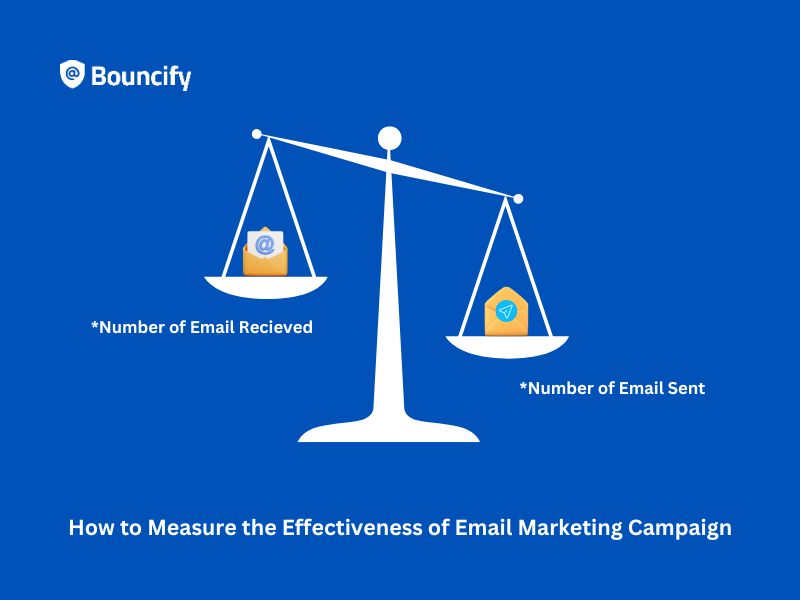How to Measure the Effectiveness of Email Marketing Campaign

Email marketing is a powerful tool for businesses to connect with their audience, but measuring its effectiveness is critical to optimising campaigns and getting the desired results.
Important email marketing metrics to Measure:
1. Open Rate:
- This record demonstrates how effectively your title and sender brand influence customer behaviour.
- A higher open rate typically implies that your email content is appealing to your target audience, making them more inclined to engage with your message.
- Analysing open rates allows marketers to assess the early impact of their efforts and fine-tune methods to increase total email engagement and effectiveness.
How to calculate Open Rate = [Unique open / Delivery Emails] * 100
Unique Opens: The number of people who opened your email at least once.
Delivery Emails: The total number of emails delivered to the recipient’s inbox.
2. Click-through Rate:
- The click-through rate (CTR) is the percentage of receivers who responded to your email by clicking on links placed in it.
- CTR measures how well your email content and calls-to-action resonate with your target audience, offering insight into the engagement and effectiveness of your email campaigns.
How to calculate click-through Rate = [Total clicks/ Delivered Emails] * 100
Total Clicks: The total number of clicks by recipients on links in your email.
Emails Delivered: The total number of emails delivered to the recipient’s inbox.
3. Conversion Rate:
- The conversion rate measures the percentage of receivers who complete a desired action, such as making a purchase, after clicking on links in your email.
- This measure assesses the efficacy of your email campaigns in achieving certain goals and activities, providing information on the impact of your messaging and call-to-action techniques.
How to Calculate Conversion Rate = [ Number of conversion/ Total clicks] * 100
Conversion rate: The number of recipients who clicked the link in your email and completed the desired action.
Total Clicks: The total number of clicks received by recipients on links in your email.
4. Bounce Rate:
In email marketing, bounce rates are the percentage of emails that are returned to the sender as undelivered. Bounces are classified into two types:
- Hard bounces, which occur when an email is permanently rejected owing to an invalid or non-existent email address.
- Soft bounces, which are caused by transitory issues such as a full inbox or a server error.
How to calculate bounce rate = [Number of bounce rate /number of emails sent] *100
5. List Growth Rate:
- The list growth rate tracks the fluctuations in your email subscriber base over time, taking into account both new sign-ups and efforts to maintain list integrity.
- Businesses can watch changes in list size to gauge the performance of their marketing campaigns, examine the impact of list management strategies such as cleaning out inactive addresses, and evaluate the success of acquisition tactics such as lead magnets or promotions.
- Monitoring list growth allows firms to optimise their email marketing activities, guaranteeing a healthy and engaged subscriber base, which is critical for effective communication and campaign performance.
Conclusion:
A number of important indicators need to be tracked in order to measure the effectiveness of an email marketing program, each of which provides useful insights into engagement and performance Open rates determine how your email subject and sender list is an emphasis on interest, which influences the first interaction.Click-through rate (CTR) assesses the effectiveness of your content and calls-to-action in encouraging recipients to connect further with your message. Conversion rate reflects the ultimate success of your campaign by tracking how many recipients perform the desired actions. The bounce rate that includes both hard and soft boosts indicates challenges with distribution that can affect the success of the campaign and the sender’s reputation.
Bouncify checks email addresses to keep your list clean and reduces bounces from invalid or out-of-date contacts. Businesses that integrate Bouncify into their email marketing strategy can improve list sanitation, increase engagement metrics, and achieve more successful campaign results. This comprehensive approach to monitoring and optimisation enables firms to maximise the effectiveness of their email marketing activities and create long-term customer relationships.